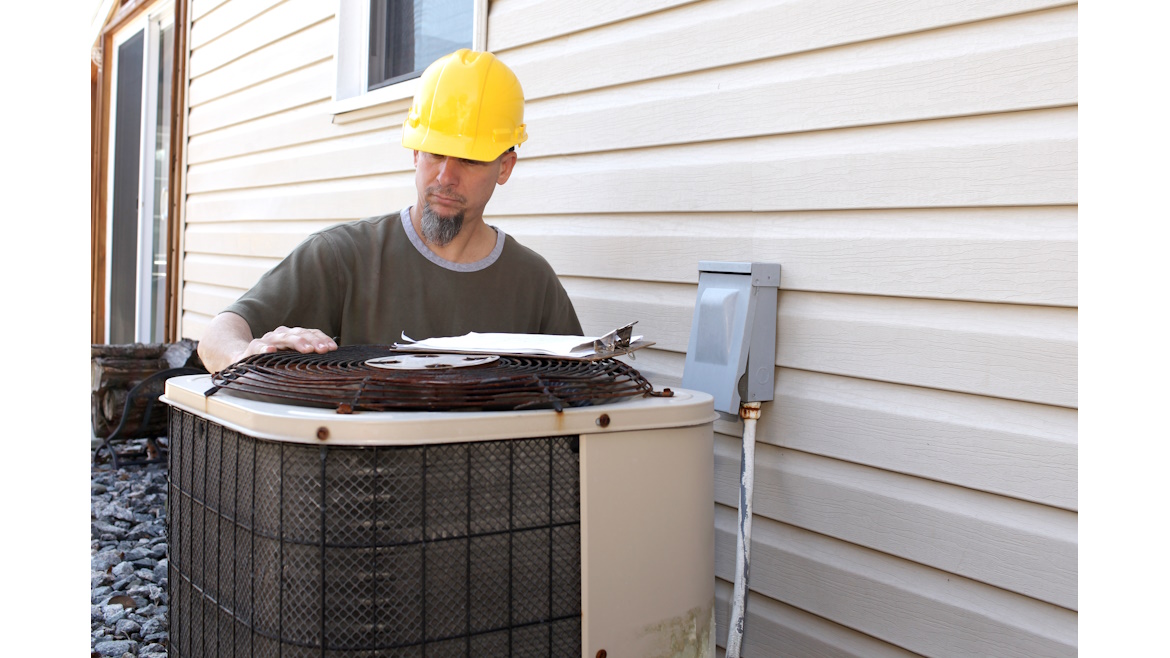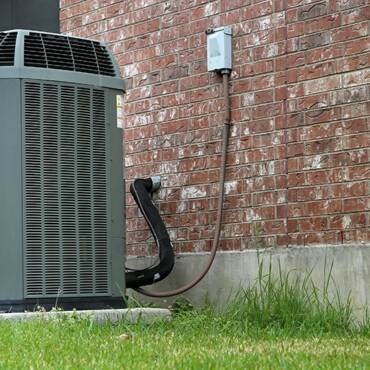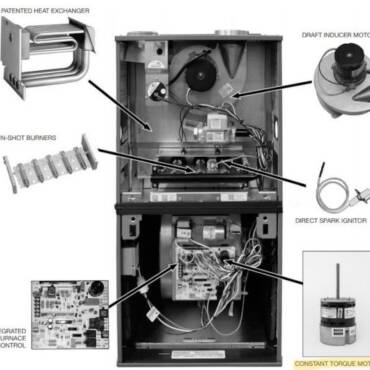The HVAC is yet again standing face-to-face with a new year and a new set of challenges.
The complexities associated with the refrigerant transition are likely to be an enormous aspect of the industry in 2025, adding to some of the headaches felt in 2024 where, due to the AIM Act, there were major cuts in the production of high-GWP HFC refrigerants like R-410A. As 2025 will officially spell the end of the manufacturing of R-410A systems, contractors and technicians alike will need to evolve during this era of new refrigerants.
The industry is also still facing a lingering workforce shortage, but many are seeing Gen Z beginning to step up and fill the void. This next crop of technicians is going to be needed to help with the technological challenges that are going to come as more equipment becomes integrated with advanced technology while the industry continues to see a push for decarbonization and electrification.
Spurred by incentives, rebates, and other programs that have also flooded the market, electrification is gaining in popularity, but, at the same time, a new study has also shown few homeowners are aware of these subsidies. The good news is that over the last year, nearly all contractors have reported getting questions from homeowners about heat pumps, which accounted for 33% of installations.
The economy still has some HVAC customers acting skittish, and many typically won’t replace until the cost of repair is a minimum of 30%-to-50% of the cost to replace. Financial stability has also revealed a generation split in attitudes toward equipment and maintenance habits.
To get a sense of what happened in 2024, and what can be expected in 2025, The ACHR NEWS reached out to three contractors for their take on the overall situation.
The Refrigerant Change
Weighing heavily on the minds of everyone involved in the HVAC industry, the refrigerant change is going to present a number of unique challenges.
Martin Hoover, ACCA Board of Directors chair and owner of Empire Heating and Cooling, said getting his team up to speed on the new A2Ls, and the proper installation of those products, was a high priority in 2024.
“We had our whole team certified, taking advantage of the ACCA A2L certification process that is included with the ACCA membership; we even included part of our office team in that as well,” Hoover said. “As we get more A2L products to install in 2025, it will be critical that we prioritize proper installation to avoid future liability and to make sure we provide the highest level of service to our customers.”
Change in the industry is nothing new, but Cody Dampf, president/owner of Innovative Air Pros Inc., said this particular refrigerant change has been the least structured so far, and the biggest challenge it has created this year is yet again equipment shortages.
“I think it was an interesting move by Daikin to start production in 2024 and to be the first to market with a new product,” Dampf said. “I believe 2025 will be a bigger challenge as other manufacturers roll out their new equipment with more shortages, as well as the wave of problems that typically come with these changes. It will also be a challenge for smaller companies with regards to tools needing to be changed, techs needing to be trained, and the additional materials each truck will need.”
Butch Welsch, owner of Welsch Heating & Cooling, noted that when he was getting all of his service technicians and replacement installers trained on the proper use of the new refrigerant, he noticed the information was relatively slow coming from the manufacturers.
“So we have had to make an extra effort to make sure all of the training is accomplished,” Welsch said. “The second issue regarding the refrigerant change involves the inventory of units with the new and old refrigerants. The manufacturers are not all using the same procedure with regard to the change in the units. Some will manufacture units with R-410A as late in this year as possible, while others began converting their lines to equipment that requires the new refrigerant several months ago.”
To add to the issue, Welsch said, some manufacturers have also been slow with producing pricing for systems utilizing the new refrigerant, which certainly added another degree of complexity to the situation.
“As a quality-driven company, we want to be sure we install the appropriate matching equipment at the appropriate price point,” Welsch said. “As far as the impact on 2025, it will be a matter of being extremely careful to make sure we have the proper equipment that attains the efficiency levels we have sold. We believe it could take most of the year before it all gets sorted out.”
Labor Shortage
The labor shortage has been plaguing the HVAC industry for years, and as retirements continue to ramp up, more efforts have been focused on getting the next generation to realize there are good careers awaiting them as technicians.
Hoover said they’ve seen a substantial shift in the way the younger generation sees the HVAC industry as a viable, dependable source of employment.
“We have done well recruiting year-round and bringing in young people — whether they have tech school training or not — by combining some very specific on-the-job training as well as specialized training available in the industry,” Hoover said. “I look forward to the challenges we have in finding ways that we might need to change to make our industry more attractive to the younger generation. Unique work schedules and increased PTO top the list for what the new generation of workers is looking for.”
From Welsch’s vantage, he believes many companies, especially those in metropolitan areas, are not having difficulties finding young workers, but there is some extra effort necessary to reel them in.
“Overall, I believe some of the efforts are working,” Welsch said. “There are more young people considering jobs in the trades now compared to a four-plus-year college education. It has taken interaction with school districts, school counselors, and anyone with influence over young people deciding on their future.”
When recruiting those interested in following the trades path, Welsch suggests explaining the costs typically associated with a university and the lack of job availability in many classifications.
“Then compare that to our apprentice program — four weeks of in-class per year (once a quarter), the balance is on-the-job training,” Welsch said. “Not only is the schooling paid for on behalf of the apprentices, but in addition, they receive their normal hourly wage while attending the school. After five years, they have a job, they are at a high pay level, and based on history will likely have as much full-time employment as they desire. As I said in the beginning, the key is to find the ways to get these messages across.”
Dampf has high hopes for the workforce coming into 2025.
“Is the younger generation different than those of the ‘70s, ‘80s, and ‘90s? Absolutely they are, but to say the well is dry and that there is no labor to be had is a farce,” Dampf said. “We have had great success with the younger generation — they tend to be more driven by the workplace environment instead of just a paycheck, which in turn creates longer terms for employees and less turnover. This also creates more recruiting opportunities from within the tech pool. I believe a forward-thinking contractor will succeed in the recruitment of new technicians, and those who refuse the build real culture will suffer.”
Consumer Behavior
Consumers are doing their homework, which can be a mixed bag at times.
“We have seen an increase in the amount of questions that consumers ask about the projects being performed; they are more educated on our industry than ever before,” Dampf said. “The customers seem to have also taken an interest in the company’s community outreach as well as a strong emphasis on customer service from the technicians and office staff.”
Welsch said he’s noticed a significant shift in customer behavior since COVID, where in many instances, things like IAQ shot to the top of the priority lists of many who were stuck at home.
“For whatever reasons, customers are clearly more demanding than ever,” Welsch said. “In addition, because of their need to remain at home more during COVID, they have gotten used to using the computer to research potential purchases. This has made them, in some cases, more intelligent buyers. In other cases, it has made them more confused buyers. There is no doubt, however, that the buyers are definitely more difficult today. Sometimes a little bit of knowledge is helpful. At other times, it makes explaining the truth more difficult.”
Hoover said he noticed some unique behavior in 2024 as it pertains to typical business patterns.
“Many of our typically busy months were slower, and many of our typically slower months were busier. Some of this may have been from the election, but I think some of it has been waning consumer confidence as well,” Hoover said. “Many repair options were chosen over replacement, and I believe that was part of the confidence in the economy moving forward. I expect 2025 to be somewhat the same.”
Decarbonization and Electrification
Two of the industry’s biggest mega-trends, decarbonization and electrification efforts, were fueled in 2024 in part by government incentives and a shifting environmental consciousness.
Hoover said he believes increased awareness, thanks to more coverage by the press and the promotions being touted by the federal government, helped to push some toward electric-only options, but it still surprises him that so many people think heat pumps are a new technology when in fact they’ve been around for decades.
“I think fuel choice for consumers is important, along with a more gradual phasing in of new technologies,” Hoover said. “To eliminate fossil fuels completely when our grid is not ready to support that is a bit surprising to me; the general conception that electricity and the all-electric alternatives have zero impact on the environment is a bit surprising to me. I hope, moving forward, we can have a more practical approach and look at this from a long-term perspective that evaluates all fuel options.”
But for Dampf and Welsch, who operate in Oklahoma and Missouri, respectively, they haven’t quite seen the push for electrification that others have in different parts of the country.
“We have relatively low natural gas rates, and our electricity is not ridiculously priced, either,” Welsch said. “While there will likely be some continued interest in electrification, I believe that there are enough built-in limitations and difficulties with electric equipment that while the push will continue, there will be a place for gas furnaces in homes for a long time in the future.”
“Being in Oklahoma, we are a big natural gas state — we have seen very little change over the electrification push,” Dampf said. “We did not see more heat pump sales than previous years as far as our ratios are concerned. I am not sure if this push will last, and I think it will fizzle out as they realize our current grids are not built to handle that type of load. But we will continue to adjust as regulations continue to evolve.”
Thrive in 2025
To position for success in 2025, Dampf said they plan to put a lot of focus on customer experience, as well as community involvement.
“With a more strategic approach to marketing and recruitment, we plan to grow substantially in 2025,” Dampf said. “We are 100% focused on residential services and will continue to create a white glove, concierge service experience.”
For Welsch, he doesn’t see much of a departure from what they focused on in 2024. He foresees the demand for replacement work on installations from the late ‘90s through 2005 will continue to feed their replacement division and, with interest rates a little lower and the election over, some undecided consumers who were on the fence in the repair-versus-replace debate may opt to go with replacement now.
“New construction will likely be similar to the last couple of years as the public has become more familiar (comfortable) with interest rates and are working their way past them,” Welsh said. “Many of those of us who have been in the industry for years remember that these current rates are on the low side of what has been normal. The public has to become aware of what is the likely new normal.”
Whether you require installation, repair, or maintenance, our technicians will assist you with top-quality service at any time of the day or night. Take comfort in knowing your indoor air quality is the best it can be with MOE heating & cooling services Ontario's solution for heating, air conditioning, and ventilation that’s cooler than the rest.
Contact us to schedule a visit. Our qualified team of technicians, are always ready to help you and guide you for heating and cooling issues. Weather you want to replace an old furnace or install a brand new air conditioner, we are here to help you. Our main office is at Kitchener but we can service most of Ontario's cities
Source link



